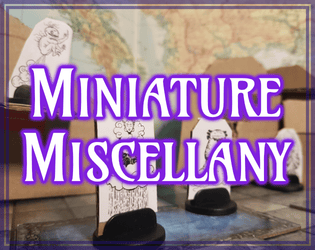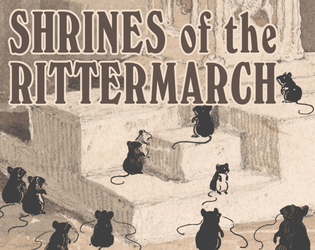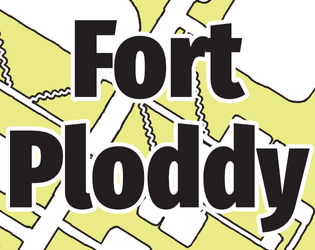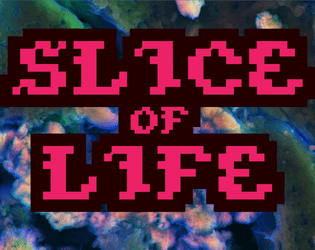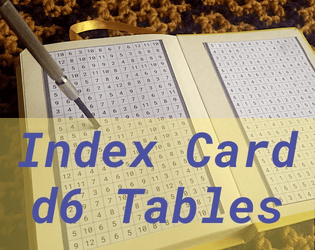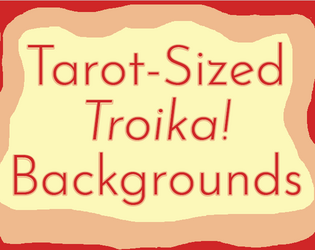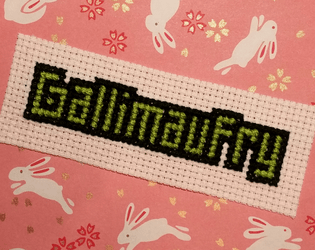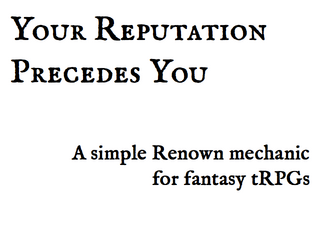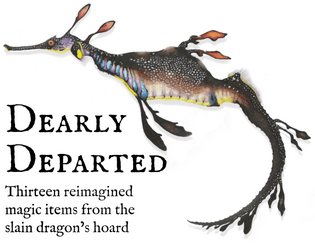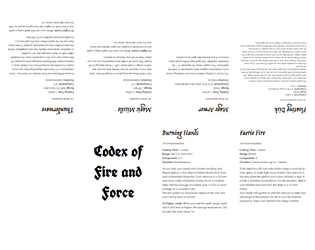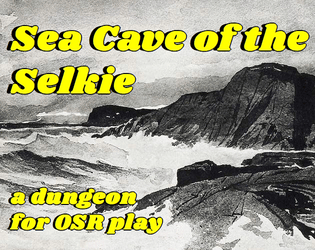Are the PCs literally small, like Gulliver's Travels Lilliputians? Or figuratively small, i.e. exploring a vast unknown?
glaucus
Creator of
Recent community posts
Thank you! I should note that Pyoverdine doesn't currently work in the ways you describe -- I kept it pretty close to reality and AFAIK it doesn't *oxidise* iron, only scavenge already-oxidised Fe2+ ions. I do like its "puzzle" nature -- a spell that makes goo that *stops* glowing when it touches metal; what uses will players devise? Your post does give me ideas for making it --or perhaps some other secretion spell -- more flexible.
I still need to clean up their formatting, and actually write a proper description for Kleptoplasty!
This NPC generator has some beautiful -- and functional! -- layout, with lots of charming illustrations. Some of its tables:
* what the noble family is known (and rumoured) for
* reasons to interact with them
* appearance & demeanour of individual members (and of servants)
It also has 20 small portraits to show players or use as prompts, and 20 short noble descriptions (which don't recycle any table entries)
If you end up using this zine to generate multiple families, some tables (adventure seeds, individual noble rumours) will get exhausted pretty quickly.
Even then, the format is still helpful, and you could cross out & replace entries as needed, or adapt the format for other social groups.
I picked up a community copy, but fully intend to come back and buy a copy next payday.
This is a beautiful piece of graphic design, and a lovely basic framework that can have ship powers, item spawns, or other scenarios overlaid on top.
Thank you for making community copies available (and making the text CC BY) -- I'm skint right now but hopefully I'll remember to come back and give this what it deserves.
Great html dungeon! I'll have to take a look at the source to see if i can improve my own html work.
(to be clear, it's also a good dungeon, not just a decent implementation of html)
Have you considered an epub version? Super-easy to convert html to epub (you almost certainly know that Calibre is a free program that can do it for you) and would allow easy offline use.
Maybe one day itch will finally allow paywalls on "run in browser" content -- i think it's a major barrier to tRPG people embracing html.
incidentally, for booklets under 16 pages BookletCreator is a nice little app for Mac & Windows. The paid version can handle more pages, the trial is limited to 16.
There's another windows app I've used which is more versatile, but has a slightly higher learning curve. Can't remember what it's called, or whether other platforms are supported.
(obviously lots of apps let you manually reorder pages -- it's the automation that's trickier to find)
You mentioned that submissions should preferably be A5, but are there any guidelines (for contributors to follow or ignore, as desired) for a consistent look? e.g. margin widths, fonts, font sizes, line spacing, etc?
Or is it easier for people fine with default layout to just provide a plain text version to you?
Rather than rave about this game, I'll summarise its major differences to Troika.
- No prewritten backgrounds. You make six rolls on a table to determine your starting skills and equipment. This does lose some of the charm of Troika's writeups, but is easier to quickly customise for your game world and keeps the zine short.
- No Skill stat. The game keeps Stamina and Luck, but breaks Troika's Skill stat into Brawn, Knack and Knowledge. These ability scores are determined by which starting skills you rolled: roll Archery and Navigation and you'll start with more Knack. Then to hit a target with a bow, you'll roll 2d6 equal-or-under Archery + Knack.
- Combat round structure resembles The Black Hack. All characters act once a round. PCs test initiative at start of combat by rolling equal or over their number of filled item slots. Those who succeed act before NPCs each round (in any order). Those who fail act after the NPCs.
- Attacks are Roll Under, not Roll Versus. If you miss a melee attack, the enemy doesn't get to hit you for free.
- Armour reduces to-hit, not damage. You add the defender's Armour to your 2d6 attack roll. It's possible to start with a Shield (+1 Armour) but most PCs will start with no Armour. It goes up to +5 for PCs. The example NPCs max out at +4 Armour, though it indicates a dragon might have as much as +6.
A starting PC will typically have 7 or 8 as their Skill Total for a weapon. So to hit an NPC with +2 Armour, they need to roll a natural 5- (28% odds) or 6- (42% odds).
I bring this up not because it's a bad design choice (as a post-OSR/OSR-adjacent/NSR/whatever game, you shouldn't expect a straight-up fight to be winnable). But if you don't enjoy how attack rolls work in D&D (lots of misses, which don't provoke GM moves) you'd be better off sticking with standard Troika combat rules, or using Into the Odd's "attacks always hit" system*. - No quick spells, only slow rituals. Rituals have ingredients & requirements, but don't cost Stamina. The shortest example Ritual takes a minute to perform. Most take hours. Not all rituals are literal spells, the examples also include making a forgery, brewing poison, and leaving milk & mead to attract a brownie into your home (I love this)
- The theme. I adore Troika's implied setting, but it's a lot of work hacking it to run something moody, folkloric, or closer to earth. This does most of the work for you. Note by "moody" I don't mean "grim, mud-covered fantasy with lots of random injury tables
Layout is excellent, both in visual attractiveness and in containing information within single spreads.
It looks like it'd run just fine as-written, but the end has a few pages of advice on hacking the game for different settings, introducing quick-cast magic
I bought the printed zine on a whim from the Soul Muppet web store, not knowing what to expect, and I'm really glad I did. It's a well-thought-out game, and I hope this overview helps you decide if it's to your taste.
*I also think kitbashing this game with Cairn would be an excellent idea.
Hey so I broke up the card frame png into different elements you can recolour, turn on/off etc. And there's an A4 & Letter template for printing 9-10 cards to a page.
Hope this helps some people :-)
https://glaucus.itch.io/tools-for-basic-tcg
Image description:
A level 1 card called Mindfulness.
Art: a whale floating in an ocean. Cartoonishly drawn, though with "realistic" baleen and eye instead of an anthropomorphic face.
Card text:
Exercise (action): Touch noses with opponent. Together, imagine a beautiful whale.
Redirect (passive): Whenever a card targets another card, gently redirect it and your attention to this card.
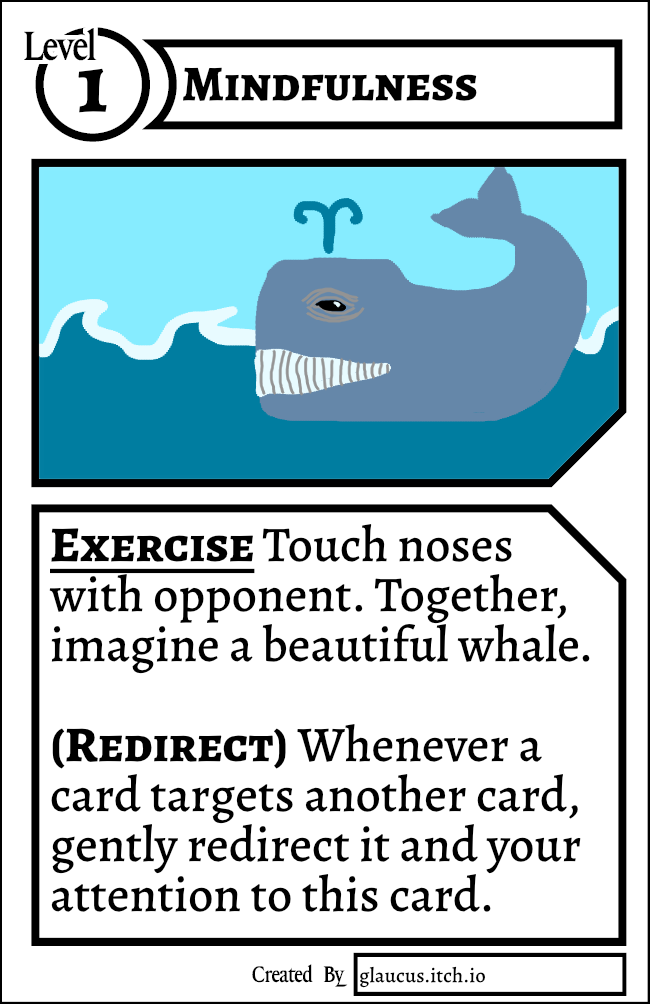
I currently use Affinity Publisher, in the past I've done layout entirely with html & css ;-). Tried Scribus once and didn't know what I was doing, though that was probably inexperience and time pressure.
There's no shame in using Word or Google Docs though! IIRC Maze Rats was laid up entirely in Word, and it's one of my go-to examples of great, if understated, layout.
(youtube video linked since the itch page doesn't have any screenshots of the booklet)
A concise one-page move/procedure slottable into any game. The reverse side of the page gives background & summarises the main points of the linked pamphlet.
While I generally prefer some randomiser element, this is a great framework that lets magic be powerful & impactful, "balancing" it against player consensus (two other players have to be on board with your proposed effect) and against possible consequences for your character and the world.
Really nice job. Would work equally well in a game where everything is freeform and negotiated, or in a game where everything else "mundane" is handled by hard rules. e.g. a Star Wars game where the Force retains a sense of mystery, rather than being a laundry list of superhero powers.
A couple of hooks for Shrines.
- "Some shrine priest charged me for entry, then tried to recruit me for some mission to 'reclaim his birthright'! The nerve! Someone's going to take advantage of him, you mark my words!"
- "Y'know, there's cultists in the area, word is they worship the One Who Hungers. They have some real power too, I traveled two-days north to get a barrel of my favourite mead and [some important landmark] was to the east, y'following me? But when I returned it was on the west! That's sorcery if ever I've seen it. *hic*"
Hey so while I don't yet have an adventure site written (a couple are percolating in my head), I did write some shrine descriptions that can be scattered around the hexcrawl. If it doesn't fit the theme of the jam I can remove, rename, and repost it as something separate.
https://glaucus.itch.io/shrines-of-the-rittermarch
The main jam page is unclear about whether you'll be compiling the text of all submissions into a big hexcrawl, or just a sentence or two as overview, with a link to the relevant itch release for that hex.
It's also unclear about whether you expect submissions to be free/pwyw, free just for the duration of the jam (so creators can check out each other's work, or whether attaching a minimum price is OK.
To be clear, I'm fine with answers that require giving away my work for free. e.g. everyone's submissions could be put into an itch bundle and sold at a bulk discount, perhaps with proceeds going to charity, Or if they're compiled into a single document you publish, I'm fine with that being set to $0, or sold to raise money for charity. I just want to know what to expect, going into the jam.
I really like the escalating advantage/take +10% forward system, and how you can give it up for a retreat. Really clean and simple, pushes gameplay towards certain tropes.
Like many rules-light systems, you'll have to fill in the blanks with your own preconceptions. e.g. how does initiative work, and do NPCs have similar stats to players? The "take the 10s digit of a successful attack, this equals damage dealt" would suggest this, because The Black Hack-style "roll over player's stat to hit" would produce only really high damage numbers.
edit: I missed the ref booklet, which answers this question. NPCs deal static damage on a failed roll by the player.
(this isn't meant as a criticism--there's necessarily gaps when a game fits onto a single-sided A4 sheet. Just a forewarning for people not sure what to expect)
Overall I like this rules module. Could someone write it themself for free? Sure, especially since the text of Troika and Knave are freely available. But hopefully this review/comment gives you an idea of whether $2 is worth the inspiration and labour saved.
First, some notes about format. 3 (landscape-oriented) pages, 650 words, simple two-column layout double line spaced. Easy to read, but a bit wasteful to print. Copy-pastes to a text editor without any text flow errors, so screen readers should be fine with it.
It's impossible to write a concise system that can effortlessly plug into *every* OSR game, but this gives enough ideas that a playgroup can decide how to interpret or tweak various things.
Some noteworthy things:
- Item slots equals your Str score. For games with only a *modifier* (e.g. World of Dungeons) I'd say slots = 10 + Str mod. Note that unlike Knave, where the minimum score is 11, B/X or any 3d6-in-order system can produce characters who are very limited in carry capacity.
- You *can* carry more stuff than your item slots, with escalating penalties to all rolls. Penalty to rolls obviously has different effects depending on what players roll for -- it's worse in The Black Hack or WoDu than for, say, a B/X magic-user.
- It borrows Troika's (and Torchbearer, I think?) mechanic of having to roll whenever you want to retrieve items. The order of item slots matters.
- Armour takes up 1 slot per bonus it gives. This is probably a bit much for "armour reduces to-hit" systems, I'd make it take 1 slot per +2 bonus to Armour Class. For "armour as damage reduction" (Into the Odd) or "armour as ablative HP" (The Black Hack 1e) you might need to tweak this ratio.
- There's good guidelines for deciding how many slots a non-armour item takes. Knave partly leaves it up to the GM, so it's nice to have some more concrete advice here.
- Damage takes up item slots! 1 hp per slot feels very inappropriate for B/X, to be fair the author points this out and offers solutions. But it could work with Jared's The Vanilla Game, other games with Vitality/Wounds, games with less granular HP, or with HP that never scales.
- There are items (magic backpacks, bandoliers) that either adjust your carry capacity or your roll to retrieve things.
actually if I do have one small criticism it's that the flipbook implements 2d6 not very well. Of the 28 pages, 24 pages have a pair of dice printed on them, with the mean being 6.75. Throwing a pair of dice has 36 possible results with a mean of 7.
The probability of rolling 8+ on 2d6 is about 42%, using this flipbook it's 38%. Shouldn't be particularly noticeable over a one-shot session.
If you want to use the flipbook to reference a d66 table, you can flip the book twice and use the second die of each pair (no page has a "2" as the first die, so don't do that). This has a less accurate distribution, but unlike the printed dice pairs can roll any d66 result.
(yes i do get that printing costs of a 28-page booklet are lower than a 40-page one. It's a *small* criticism)
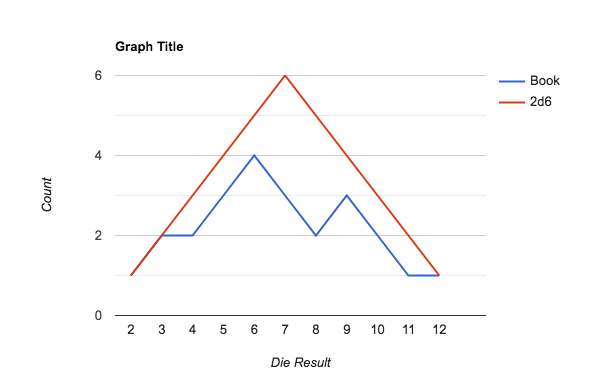
though for flipbooks i would recommend people do a Chinese/Japanese stab-binding rather than a saddle-folded booklet.
list of stab-binding tutorials
I love the implication that different worlds have different rules (both fictional/worldbuilding and game-procedural).
The three 1d6 tables of portal appearances, destinations and inhabitants are well-written, enough for a starter session.
The GMing advice is similar to WSCAOS, but rewritten and expanded upon. My favourite line is "If there’s a rule you don’t like, burn it as part of a ritual to
open a portal to a new world.
The little page-flip dice down the bottom are great.
Overall, a really lovely standalone game. Definitely worth the asking price.
Hey if anyone else needs a workaround to make this comments section more readable, try the following:
1. Open your browser dev tools.
In Firefox, Shift-F7 will open the Style Editor, or open the following menus: Tools --> Web Developer --> Style Editor.
In Chrome, Shift + Ctrl + J (or Option + ⌘ + J on macOS) opens the developer console.
2. Turn off the following styles: <inline style sheet #1>, <inline style sheet #2>. In Firefox you click the little eye icon next to each style, I don't know what you do in Chrome.
I hope this helps, obviously providing instructions to make a comments section more readable within a comment is to some extent self-defeating.


